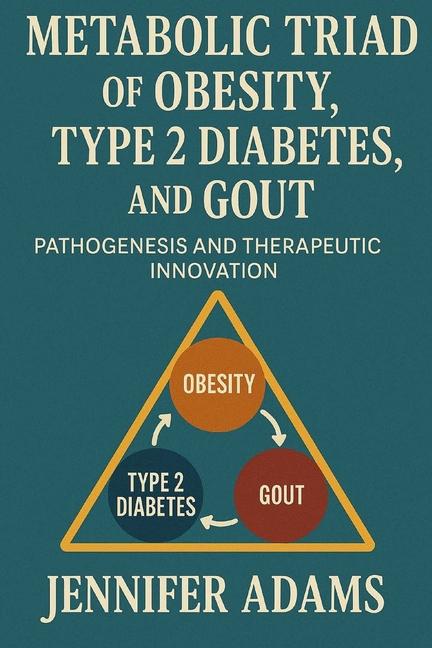Description
This eBook, "Metabolic Triad of Obesity, Type 2 Diabetes, and Gout: Pathogenesis and Therapeutic Innovation," examines the intertwined global health challenges of obesity, type 2 diabetes (T2DM), and gout, conditions rooted in chronic inflammation and hormonal dysregulation. It highlights their significant prevalence and public health impact, driven by complex mechanisms including immunometabolic reprogramming (where obesity triggers chronic inflammation via cells like M1 macrophages and NLRP3 inflammasome activation), adipose tissue dysfunction (imbalanced adipokine secretion and detrimental ECM remodeling), and disruptions in the gut-brain-pancreas axis (involving nutrient sensing, gut microbiota, and incretin hormones like GLP-1 and GIP). The report also clarifies gout's metabolic role, exploring how uric acid may mediate inflammation and endothelial dysfunction, and how insulin resistance impairs uric acid excretion, creating a vicious cycle.
The emergence of incretin-based therapies, particularly GLP-1 receptor agonists (GLP-1RAs) and the newer dual GLP-1/GIP receptor agonists like Tirzepatide, marks a paradigm shift. These therapies offer substantial benefits beyond glycemic control, including significant weight loss, cardiovascular and renal protection, and anti-inflammatory effects. While dual agonists show superior efficacy in glucose and weight management, their direct impact on uric acid and gout flares requires further research. The report underscores key research gaps, such as the heterogeneity of obesity leading to T2DM and the definitive causal role of uric acid in insulin resistance. It also points to exciting innovations like triple (GLP-1/GIP/Glucagon) agonists (e.g., Retatrutide), precision medicine via genetic predictors, and targeting the gut microbiome. Ultimately, it calls for integrated research and a holistic approach to leverage these multi-functional therapies, addressing long-term considerations like cost, access, and adherence to effectively manage this metabolic triad.
Product Details
- May 28, 2025 Pub Date:
- 9798285592556 ISBN-10:
- 9798285592556 ISBN-13:
- English Language




